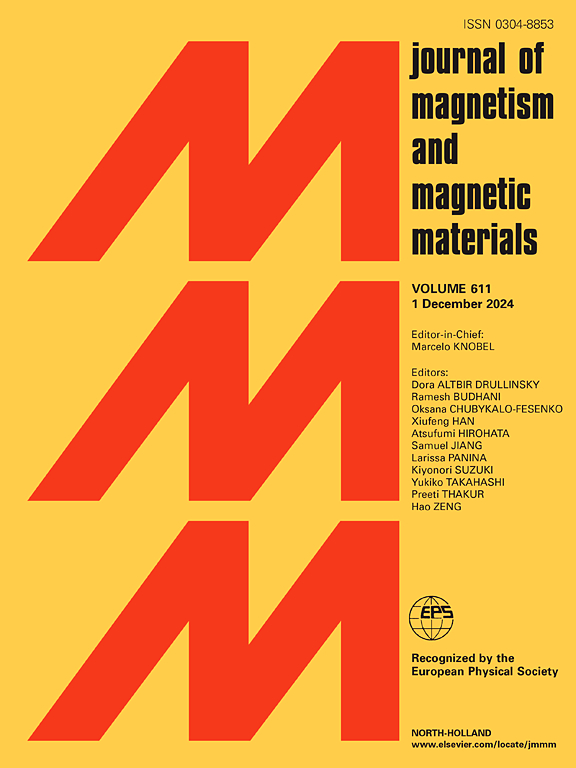Optimization of grain boundary diffusion in Nd-Ce-Fe-B magnets through CeFe2 phase
IF 2.5
3区 材料科学
Q3 MATERIALS SCIENCE, MULTIDISCIPLINARY
引用次数: 0
Abstract
The REFe2 phase in Ce-containing Nd-Ce-Fe-B magnets is considered detrimental to magnetic properties due to its soft magnetism, and the presence of the CeFe2 phase hinders the diffusion of heavy rare earth elements. In this study, grain boundary diffusion (GBD) treatment was performed on commercial N40 sintered Nd-Ce-Fe-B magnets using Tb and Tb70Cu30 alloys, respectively. The results indicate that the CeFe2 phases appear at the grain boundaries during grain boundaries diffusion, but there is a significant difference in the distribution and quantity of the CeFe2 phase between Tb GBD magnets and Tb70Cu30 GBD magnets. Cu atoms are more likely to bind with Ce in the grain boundary phase, thereby suppressing the formation of CeFe2 phase and improving the diffusion effect of Tb in Ce-containing magnets. Additionally, Cu broadens the grain boundaries, allowing for deeper diffusion of Tb. Although the substitution of Tb (30 wt%) by Cu in the Tb70Cu30 alloy, the Tb70Cu30 GBD magnet still achieves significant coercivity enhancement, nearly as well as the Tb GBD magnet. This work provides new prospects for the development of Nd-Ce-Fe-B magnets treated with grain boundary diffusion.
求助全文
约1分钟内获得全文
求助全文
来源期刊

Journal of Magnetism and Magnetic Materials
物理-材料科学:综合
CiteScore
5.30
自引率
11.10%
发文量
1149
审稿时长
59 days
期刊介绍:
The Journal of Magnetism and Magnetic Materials provides an important forum for the disclosure and discussion of original contributions covering the whole spectrum of topics, from basic magnetism to the technology and applications of magnetic materials. The journal encourages greater interaction between the basic and applied sub-disciplines of magnetism with comprehensive review articles, in addition to full-length contributions. In addition, other categories of contributions are welcome, including Critical Focused issues, Current Perspectives and Outreach to the General Public.
Main Categories:
Full-length articles:
Technically original research documents that report results of value to the communities that comprise the journal audience. The link between chemical, structural and microstructural properties on the one hand and magnetic properties on the other hand are encouraged.
In addition to general topics covering all areas of magnetism and magnetic materials, the full-length articles also include three sub-sections, focusing on Nanomagnetism, Spintronics and Applications.
The sub-section on Nanomagnetism contains articles on magnetic nanoparticles, nanowires, thin films, 2D materials and other nanoscale magnetic materials and their applications.
The sub-section on Spintronics contains articles on magnetoresistance, magnetoimpedance, magneto-optical phenomena, Micro-Electro-Mechanical Systems (MEMS), and other topics related to spin current control and magneto-transport phenomena. The sub-section on Applications display papers that focus on applications of magnetic materials. The applications need to show a connection to magnetism.
Review articles:
Review articles organize, clarify, and summarize existing major works in the areas covered by the Journal and provide comprehensive citations to the full spectrum of relevant literature.
 求助内容:
求助内容: 应助结果提醒方式:
应助结果提醒方式:


